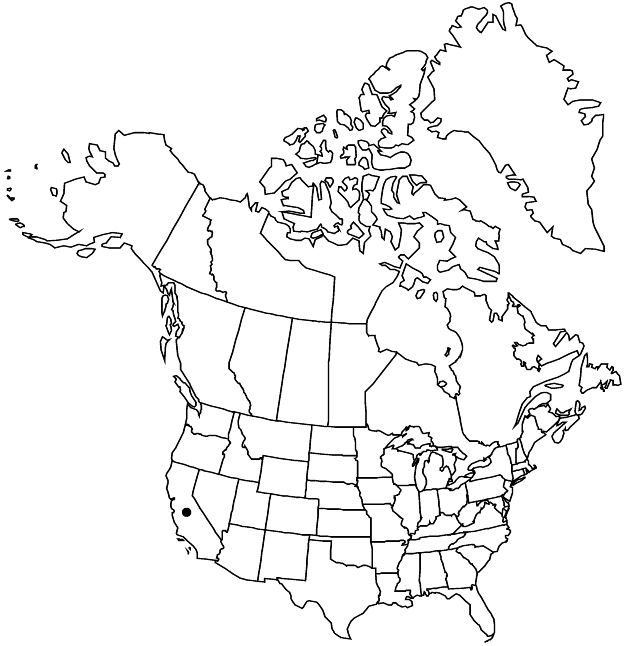Vitis girdiana
Proc. Annual Meetings Soc. Promot. Agric. Sci. 8: 59. 1887.
Plants high climbing, sparsely branched. Branches: bark exfoliating in plates; nodal diaphragms 1.5–3 mm thick; branchlets terete to slightly angled, tomentose, tomentum usually persistent, growing tips not enveloped by unfolding leaves; tendrils along length of branchlets, persistent, branched, tendrils (or inflorescences) at only 2 consecutive nodes; nodes not red-banded. Leaves: stipules usually 3.5+ mm; petiole 1/2 to ± equaling blade; blade cordate, 5–10 cm, usually unlobed, sometimes 3-shouldered, rarely shallowly 3-lobed, apex acute to short acuminate, abaxial surface not glaucous, moderately to densely tomentose, visible through hairs, adaxial surface sparsely to moderately tomentose, glabrescent. Inflorescences 8–18 cm. Flowers functionally unisexual. Berries dark purple to black, slightly or not glaucous, globose, 4–6 mm diam., skin separating from pulp; lenticels absent. 2n = 38.
Phenology: Flowering Apr–Jun; fruiting Jul–Sep.
Habitat: Stream banks, canyon bottoms.
Elevation: 10–2000 m.
Distribution

Calif., Mexico (Baja California)
Discussion
Vitis girdiana is known from Inyo, Kern, and Santa Barbara counties and southward. It is morphologically very similar to and intergrades and hybridizes with V. californica in central California. Hybridization with V. vinifera is also probable, making identifications of some specimens quite difficult. Vitis girdiana intergrades also with V. arizonica in eastern Inyo and San Bernardino counties near the California-Nevada border. The V. californica-girdiana-arizonica species complex is in need of in-depth field and experimental studies.
Selected References
None.
Lower Taxa
"connate" is not a number.